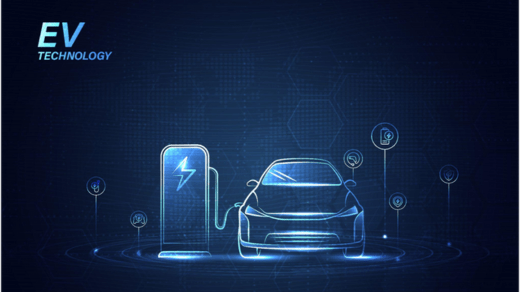The Urgency of E-Mobility Adoption in Emerging Economies
As the global push for sustainability gains momentum, emerging economies face a pressing need to transition from fossil-fuel-based transportation to electric mobility (e-mobility). With rising urbanization, increasing vehicular congestion, and worsening air quality, the urgency to adopt electric vehicles (EVs) has never been higher.
Countries like India, Brazil, and Indonesia are setting ambitious targets for EV adoption, recognizing the economic and environmental benefits. However, transitioning to an e-mobility ecosystem requires more than just government policies—it demands a well-trained workforce capable of handling the complexities of EV technology, infrastructure, and energy management.
This is where advanced training programs in e-mobility become crucial, equipping professionals with specialized knowledge to drive innovation and address challenges unique to these economies.
Why E-Mobility is a Game Changer for Developing Nations
Emerging markets stand to gain significantly from widespread EV adoption, including:
1. Energy Independence and Cost Savings
Many developing nations rely heavily on imported oil, making transportation costs highly volatile. By shifting to EVs powered by renewable energy, countries can reduce their dependence on fossil fuels, leading to long-term economic stability.
2. Environmental Benefits and Improved Air Quality
Urban centers in emerging economies suffer from extreme air pollution due to high vehicle emissions. EVs offer a cleaner alternative, drastically reducing harmful pollutants and improving public health.
3. Job Creation and Economic Growth
The e-mobility sector opens up diverse employment opportunities, from EV manufacturing and battery production to infrastructure development and maintenance. Investing in workforce training ensures a steady supply of skilled professionals to support this growing industry.
Challenges Hindering E-Mobility Growth in Emerging Economies
Despite its potential, the transition to e-mobility in developing nations is slowed by several key challenges:
1. High Initial Costs and Financing Barriers
EVs and their associated infrastructure require significant upfront investment. Although government subsidies help, affordability remains a concern, particularly for middle- and lower-income populations.
2. Limited Charging Infrastructure
A lack of widespread charging stations discourages consumers from switching to EVs. Strategic planning and investment in charging networks are crucial to overcoming this barrier.
3. Shortage of Skilled Professionals
A major roadblock in e-mobility adoption is the shortage of trained personnel. Professionals with expertise in EV engineering, battery management, and charging infrastructure are in high demand, highlighting the importance of advanced training programs.
The Role of Advanced Training in Overcoming E-Mobility Barriers
To address the skills gap, several e mobility courses have emerged, offering specialized training in:
- EV Design & Engineering – Understanding battery technology, electric drivetrains, and vehicle aerodynamics.
- Battery Technology & Management – Optimizing battery efficiency, recycling, and safety protocols.
- Charging Infrastructure Development – Designing efficient and scalable charging solutions.
- Smart Mobility & IoT Integration – Leveraging AI and connectivity for intelligent transportation systems.
These courses provide hands-on experience and industry insights, enabling professionals to contribute effectively to the growing EV ecosystem.
Career Opportunities in the E-Mobility Sector
With governments and private enterprises heavily investing in electrification, the demand for skilled workers is skyrocketing. Pursuing an emobility career can open doors to a variety of high-growth roles, including:
- EV Design Engineers – Developing efficient and cost-effective electric vehicle designs.
- Battery Technologists – Innovating battery chemistries and recycling solutions.
- Charging Infrastructure Specialists – Planning and deploying public and private charging stations.
- Policy and Regulatory Experts – Advising governments on sustainable transportation policies.
- Smart Mobility Consultants – Integrating AI, IoT, and automation into urban transport.
As the industry expands, professionals with specialized skills will play a key role in shaping the future of transportation.
Building a Sustainable E-Mobility Future
For emerging economies, the transition to electric mobility is not just about adopting new technology—it’s about creating a resilient, sustainable transportation ecosystem. Governments, businesses, and educational institutions must collaborate to:
- Expand Charging Infrastructure – Prioritize investment in widespread charging networks to support mass EV adoption.
- Strengthen Policy Support – Implement favorable regulations, incentives, and tax benefits for EV consumers and manufacturers.
- Develop Local Manufacturing – Reduce dependency on imports by encouraging local EV and battery production.
- Invest in Workforce Training – Build a skilled workforce through targeted education and hands-on training programs.
By addressing these critical areas, emerging economies can not only accelerate EV adoption but also position themselves as global leaders in sustainable transportation.
The Road Ahead for E-Mobility in Emerging Markets
Electric mobility represents a transformative opportunity for emerging economies, offering environmental, economic, and social benefits. However, unlocking its full potential requires strategic investments in infrastructure, policy, and talent development.
With access to high-quality e mobility courses and advanced training programs, professionals can bridge the knowledge gap and contribute meaningfully to the industry. As the world moves towards a greener future, skilled individuals will be at the forefront of this revolution, driving innovation and sustainable growth in electric mobility.

